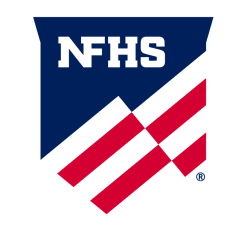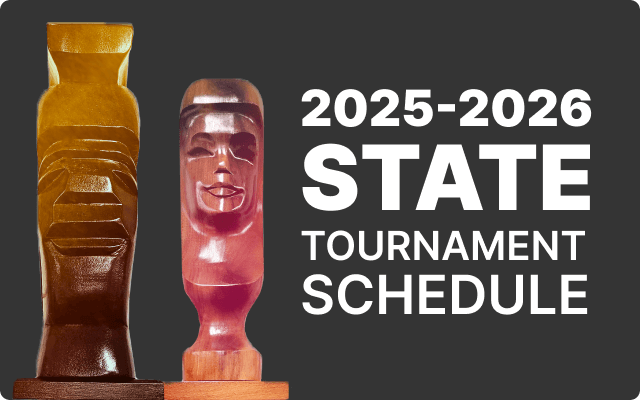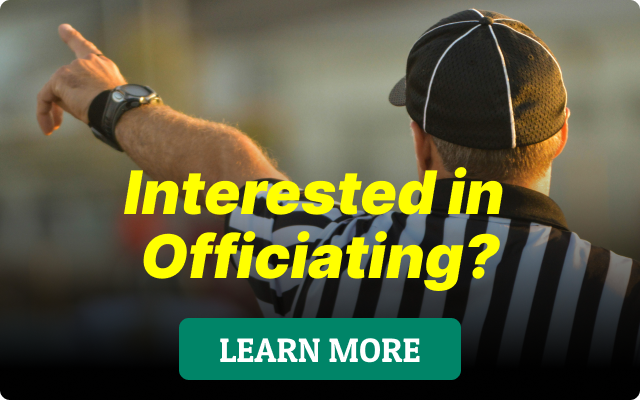INDIANAPOLIS, IN (July 11, 2023) – In an effort to more clearly define false starts in high school track and field events, two new starting violations have been adopted for the 2024 season.
In Rule 5-7-4c, the previous language which required participants to remain motionless after assuming the set position prior to the starting device being fired, has been replaced with the following:
“If a runner leaves their mark with a hand or foot after the ‘set’ command but before the starting device is fired.”
In addition, a new violation in (d) calls for a violation “if a runner leaves their mark with a forward motion without the starting device being fired.”
Further, a new NOTE in Rule 5-7-4 states that “extraneous motion before the device is fired does not necessarily require a false start to be charged unless the criteria in the rule are met. If the starter thinks the movement creates a situation of unfairness to any of the competitors, the starter may cancel the start with the command ‘stand up,’ or if the device has been fired, recall the race as an unsteady or unfair start and redo the starting procedure.” This NOTE was also added to Rule 8 regarding cross country.
“The rules committee felt that these changes offer a clearer definition of a false start and will help add consistency in how false starts are officiated,” said Julie Cochran, NFHS director of sports and liaison to the NFHS Track and Field Rules Committee.
This change to rules relating to false starts was one of 11 rules revisions recommended by the National Federation of State High School Associations (NFHS) Track and Field Rules Committee at its June 12-14 meeting in Indianapolis. The recommendations were subsequently approved by the NFHS Board of Directors.
A significant change was approved by the committee in Rule 6 regarding field events. In the discus, shot put and javelin, athletes will be permitted to apply tape to their fingers as long as the fingers are not taped together, and all fingers can move independently. The specific language approved by the committee is as follows:
“Tape may be used on the hand and fingers provided that no two fingers are taped together. The tape may be continuous and connect to the wrist, but all fingers must be able to move independently. A wrist wrap used in lieu of tape is acceptable and is not considered an artificial aid.”
In other changes to field events, further definition related to breaking ties was added to Rule 6-3-2b. To address the situation when two or more tied competitors withdraw from the competition/jump-off at the same time, the committee added the following language to determine first place:
Rule 6-3-2b(4)(b) states that “if all competitors eligible for a jump-off withdraw from the competition before the jump-off begins or at a height change, those competitors shall tie for first place, and any team points shall be added together and divided equally among the tying competitors.”
In addition, a NOTE was added to the rule stating that an athlete who withdraws from a jump-off concedes the higher place, but the withdrawal does not negate the athlete’s performance in that event up to the point of withdrawal. In addition, withdrawing from a jump-off is not unsporting conduct.
Another field event change was approved for Rule 6-2-2, stating that in the high jump and pole vault, one minute shall be allowed for the first trial of a competitor first entering the competition. The committee noted this additional language clarifies how the rule is to be interpreted and adds support to the official’s decisions when a competitor enters the vertical jumps after the event has started.
In other changes to Rule 5-Running Events, some of the specific language regarding track markings in Rule 5 was deleted and replaced with the following general statement: “Staggered markings are dependent on the geometry of each individual track.” In addition, a NOTE was added to the rule stating that a competent surveyor should determine the lane staggers. The same language was added to Section 9 regarding indoor track and field.
In other Rule 5 changes, a clarification was provided to the section on hurdling infractions. It is an infraction if a competitor knocks down or displaces any hurdle by hand. The addition of displacement of any hurdle was added to give guidance to officials when ruling on infractions.
In Rule 4 regarding “Competitors and Competition,” state associations will be permitted to allow participants in a high school track and field meet to compete in more than four events, effective with the 2024 season.
Rule 4-2-1 stating that a competitor shall not compete in more than four events, including relays, remains intact; however, a NOTE was added to the rule for flexibility for state associations as follows: “State associations may adopt different participation limitations, not to exceed six events.”
Cochran said the addition of this state association adoption adds flexibility for state associations. Ultimately each state will determine the number and type of events best suited for its state and student-athletes – not to exceed six total events.
Other rules revisions approved by the Track and Field Rules Committee include the following:
- Rules 8-1, 8-5: Clarifies the cross country course layout and reorganizes the rule.
- Rule 9-6-1: New rule offers guidance on the relay exchange zone for indoor track and field.
- Rule 3-8-1: With technology advancements, changed the requirement for two appointed officials when FAT timing is used to one appointed timing official.
A complete listing of the track and field rules changes will be available on the NFHS website at
www.nfhs.org. Click on “Activities & Sports” at the top of the home page and select “Track & Field.”
According to the 2021-22 NFHS High School Athletics Participation Survey, track and field is the second-most popular sport for boys with 569,262 participants in 17,070 high schools nationwide, and it is No. 1 for girls with 456,697 participants in 17,028 schools.










